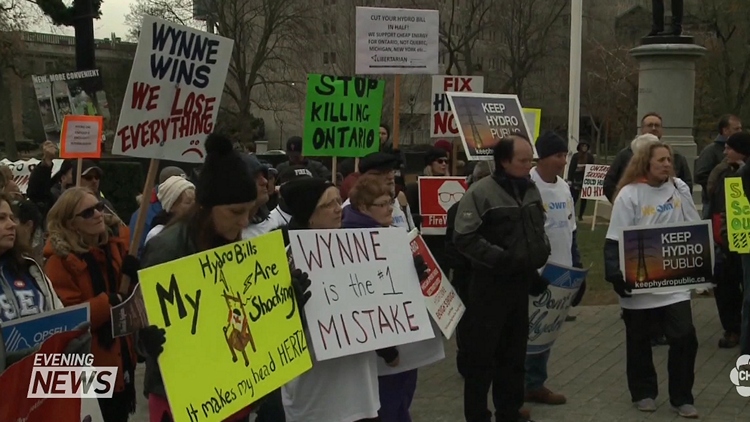
LATEST STORIES:


[projekktor id=’26188′]
The Ontario Liberal government will introduce their cap-and-trade program on January 1st to help ensure their greenhouse gas emissions targets but the province’s budget watchdog says there’s a tremendous amount of uncertainty.
The province predicts the cap-and-trade program will bring in $1.9 billion in revenue next year but the financial accountability officer is not so sure. One thing is guaranteed though, the program will dig deeper into Ontarians wallets that are already pinched with their hydro bills.
A rally was held at Queen’s Park today. It comes on the heels of Premier Wynne’s admission that rising hydro bills were her mistake. She has promised to find ways to lower rates but with the launch of the cap and trade program hydro bills will get worse and the cost of gasoline is expected to go up 4.3 cents a litre. For the average homeowner next year it will cost an additional $13 a month to heat a home and to fuel a car thanks to the program.
Here’s how it works: starting January 1st, businesses will have a capped limit on how many tones of greenhouse gas they can pollute. Companies that reduce their emissions can trade that surplus to other businesses that emit more carbon than their cap allows. The province says it will generate $1.9 billion next year that will go towards climate action projects. But the financial accountability officer has concerns.
“If the government commits to spending that is difficult to reduce or stop and for whatever reason revenues are lower than they expect they could end up with a bigger deficit than otherwise would be the case.” Peter Harrison.
The opposition says there’s still little information on this program. “The government is recklessly going ahead with this without having any idea what so ever. The only idea they have is that no matter how much revenue they bring in, they are using it to artificially balance the budget.”Vic Fedeli.
The watchdog’s report had more questions than answers. The word “uncertainty” was used more than a dozen times today. The financial analyst has found a number of factors the government did not account for that could cause the program’s expenses to differ from year to year.